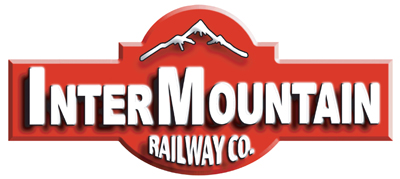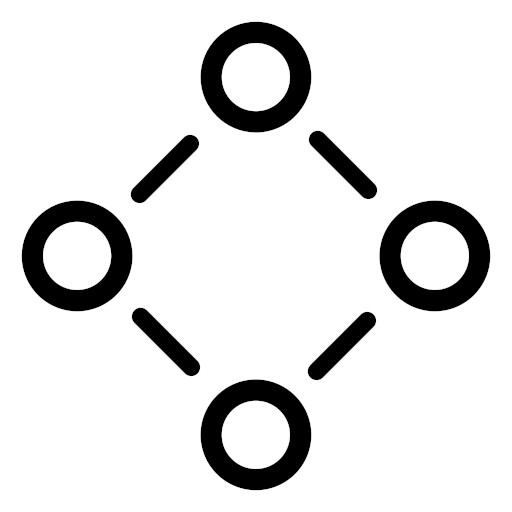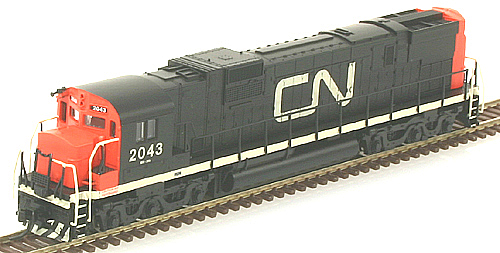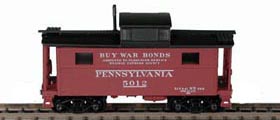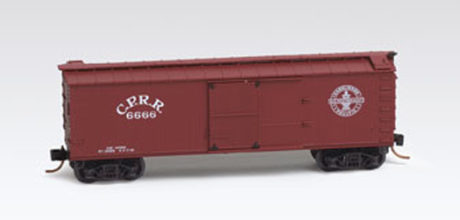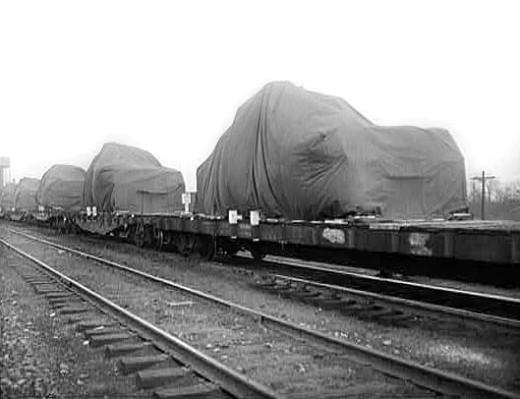Specific Item Information: Date: RPKD 11-72
Model Information: The AAR designed 53-foot flatcar was an extremely successful product as a prototype. Prior to the release of this tooling from InterMountain, the only model of this car was a few small runs of the GHQ/deLuxe Innovations with their 50 ton flatcar. The InterMountain model is the first large production model of this prototype. InterMountain offers three versions of the car: a 50-ton a 70-ton and a bulkhead car. The car features blackened metal wheels and body-mounted couplers. The couplers, however, are unfortunately not MTL models. The underframe is detailed and accurate and grab irons are separately applied detail parts (wire I suspect). The brake wheel is mounted on a wire pole for added durability (though on my sample car, the wheel had broken off the pole...) The stirrups are molded on, but nice and thin. The deck planks and rivet detail all show nicely. The print quality is high quality (as we have come to expect from most post-1990 models).
Prototype History: General Service 53'-6" flat cars were constructed with a welded fish-belly frame. The fish-belly frame provided an optimal distribution of tension and compression forces from the center of the car to the bolsters. In addition, fabricating a welded frame was less labor intensive than an equivalent riveted frame. The welded frame proved extremely durable holding up to really rugged service where the wood deck or the nail-able wood-steel deck would need to be replace couple of times during the life of most cars. These flats commonly found it's way into maintenance-of-way service because they were still in good shape beyond the AAR interchange car-age limit.
A number of builders constructed these flat cars such as the Pacific Car & Foundry (P.C. & F.), Marine Industries (Canada), Pullman-Standard, Bethelehem Steel, and including individual railroad car shops such as the Milwaukee Road and the Southern Pacific.
They were designated as FM by the AAR mechanical people. They carried anything bulky that can't be placed in box cars from tractors to finished lumber.
A number of builders constructed these flat cars such as the Pacific Car & Foundry (P.C. & F.), Marine Industries (Canada), Pullman-Standard, Bethelehem Steel, and including individual railroad car shops such as the Milwaukee Road and the Southern Pacific.
They were designated as FM by the AAR mechanical people. They carried anything bulky that can't be placed in box cars from tractors to finished lumber.
Road Name History: 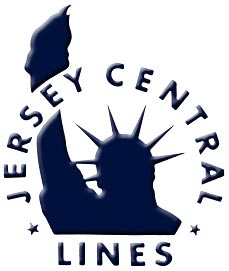 The Central Railroad of New Jersey, also known as the Jersey Central or Jersey Central Lines (reporting mark CNJ), was a Class I railroad with origins in the 1830s. It was absorbed into Conrail in April 1976 along with several other prominent bankrupt railroads of the northeastern United States.
The Central Railroad of New Jersey, also known as the Jersey Central or Jersey Central Lines (reporting mark CNJ), was a Class I railroad with origins in the 1830s. It was absorbed into Conrail in April 1976 along with several other prominent bankrupt railroads of the northeastern United States.
The Elizabethtown and Somerville Railroad was chartered on February 9, 1831, to build from Elizabeth on the Newark Bay (with a steamboat transfer to New York City) west to Somerville. The line to Plainfield was completed in March 1839, connecting to the New Jersey Rail Road in Elizabeth. Extensions took it west to Dunellen in 1840, just east of Bound Brook in 1841 and to Somerville in 1842.
The Somerville and Easton Railroad was chartered on February 26, 1847, to continue the line west to Easton, Pennsylvania. The first extension, to Whitehouse, opened in 1848 and was leased to the Elizabethtown and Somerville Railroad. On February 11, 1849, the Elizabethtown and Somerville Railroad bought the Somerville and Easton Railroad, and on February 26 the two companies were consolidated as the Central Railroad of New Jersey.

The Elizabethtown and Somerville Railroad was chartered on February 9, 1831, to build from Elizabeth on the Newark Bay (with a steamboat transfer to New York City) west to Somerville. The line to Plainfield was completed in March 1839, connecting to the New Jersey Rail Road in Elizabeth. Extensions took it west to Dunellen in 1840, just east of Bound Brook in 1841 and to Somerville in 1842.
The Somerville and Easton Railroad was chartered on February 26, 1847, to continue the line west to Easton, Pennsylvania. The first extension, to Whitehouse, opened in 1848 and was leased to the Elizabethtown and Somerville Railroad. On February 11, 1849, the Elizabethtown and Somerville Railroad bought the Somerville and Easton Railroad, and on February 26 the two companies were consolidated as the Central Railroad of New Jersey.
Brand/Importer Information: InterMountain was founded in 1985 by Fred Brummet. They got started in the model railroad business by producing O-Scale model kits. They got started in the N Scale business almost a decade later when in 1994 they introduced the 40-23 reefer car in kit form. Later, in 1998, they started producing RTR (Ready-to-Run) models. By the early 2000s, InterMountain phased out kit production in favor of the RTR models.
The InterMountain Railway company is located at 1224 Boston Ave in Longmont, CO. They are a manufacturer of HO, N and Z scale model trains. They have produced kits as well as RTR (Ready-To-Run) models. Their N Scale products include locomotives as well as rolling stock. Their rolling stock lineup includes Boxcars, Hoppers, Tank Cars, Reefers, Gondolas, Stock Cars and Flatcars.
Their locomotive releases have primarily been diesel units, with the one major exception being their series of AC-12 Cab Forward steam locos. Their diesel lineup includes F3's, F7's, F9's, SD40's, SD45's and FT units. They are known for quality and detail. They also release their rolling stock in larger varieties of road numbers than most of the other manufacturers.
The InterMountain Railway company is located at 1224 Boston Ave in Longmont, CO. They are a manufacturer of HO, N and Z scale model trains. They have produced kits as well as RTR (Ready-To-Run) models. Their N Scale products include locomotives as well as rolling stock. Their rolling stock lineup includes Boxcars, Hoppers, Tank Cars, Reefers, Gondolas, Stock Cars and Flatcars.
Their locomotive releases have primarily been diesel units, with the one major exception being their series of AC-12 Cab Forward steam locos. Their diesel lineup includes F3's, F7's, F9's, SD40's, SD45's and FT units. They are known for quality and detail. They also release their rolling stock in larger varieties of road numbers than most of the other manufacturers.
Item created by: gdm on 2016-11-08 12:28:31. Last edited by gdm on 2022-03-14 14:37:04
If you see errors or missing data in this entry, please feel free to log in and edit it. Anyone with a Gmail account can log in instantly.
If you see errors or missing data in this entry, please feel free to log in and edit it. Anyone with a Gmail account can log in instantly.



